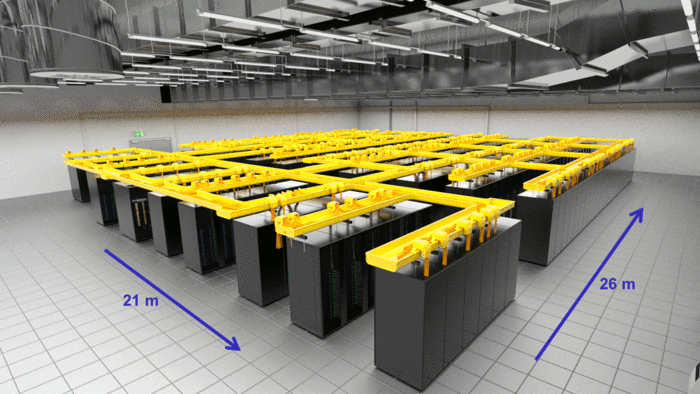 A team of computer scientists, mathematicians and geophysicists have pushed the performance of the SeisSol earthquake simulation software on the SuperMUC computer at the Leibniz Supercomputing Center to beyond one petaflop, a factor of five improvement in speed.
A team of computer scientists, mathematicians and geophysicists have pushed the performance of the SeisSol earthquake simulation software on the SuperMUC computer at the Leibniz Supercomputing Center to beyond one petaflop, a factor of five improvement in speed.
The scientists from Technische Universitaet Muenchen (TUM) and Ludwig-Maximillians Universitaet Muenchen (LMU) were able to optimise the 70,000 lines of SeisSol code to a peak performance of 1.42 petaflops, corresponding to 44.5 per cent of Super MUC’s theoretically available capacity. This makes SeisSol one of the most efficient simulation programs of its kind worldwide.
Geophysicists use the SeisSol earthquake simulation software to investigate rupture processes and seismic waves beneath the Earth’s surface. The increase in simulation speed will improve the understanding of earthquakes and allow a better assessment of potential future events.
The work groups were led by Dr Christian Pelties at the Department of Geo and Environmental Sciences at LMU and Professor Michael Bader at the Department of Informatics at TUM.
Using a virtual experiment they achieved a new record on the SuperMUC: To simulate the vibrations inside the geometrically complex Merapi volcano on the island of Java, the supercomputer executed 1.09 quadrillion floating point operations per second. SeisSol maintained this unusually high performance level throughout the entire three hour simulation run using all of SuperMUC’s 147,456 processor cores.
‘Thanks to the extreme performance now achievable, we can run five times as many models or models that are five times as large to achieve significantly more accurate results. Our simulations are thus inching ever closer to reality,’ says the geophysicist Dr Christian Pelties. ‘This will allow us to better understand many fundamental mechanisms of earthquakes and hopefully be better prepared for future events.’
The next steps are earthquake simulations that include rupture processes on the meter scale as well as the resultant destructive seismic waves that propagate across hundreds of kilometers.
The project was funded by the Volkswagen Foundation (ASCETE project), the Bavarian Competence Network for Technical and Scientific High Performance Computing (KONWIHR), the German Research Foundation (DFG) and the Leibniz Supercomputing Center of the Bavarian Academy of Sciences and Humanities. The continuing development of SeisSol is also supported by the ‘DEEP Extended Reach’, VERCE and QUEST projects of the European Union.
This story appears here as part of a cross-publishing agreement with Scientific Computing World.




